Horses and dogs like to play together. My animals have always done so, all the dogs and horses I’ve owned, throughout the years. The current horses: Vista and Maddie, and dogs: Holly and Otto, are no exceptions.
The game is chase. Dogs pursue horses and horses go after dogs. There is plenty of pretend kicking and snapping, but the hooves and teeth never connect. It is a game all the animals thoroughly enjoy. When they’re tired, they stop and rest together then are off again.
Vista is getting old, she’s 25, so she does not participate like she used to. Maddie, who is 7, is always up for a game of “Let’s Pretend to Crush the Dogs.” She feints killing blows with her hind legs, puts her head down to rush the dogs bare-teethed, and bucks and kicks around the pasture. 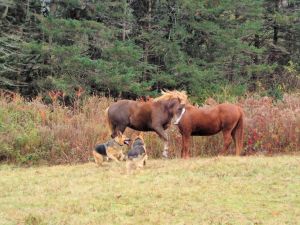
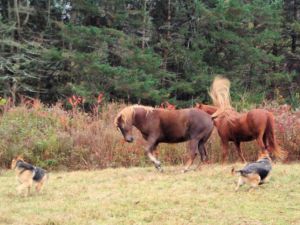 Holly is an intrepid horse gamer, showing no fear. Otto, who is younger and more wary of Maddie, has just recently begun to join the play. He is catching on quickly.
Holly is an intrepid horse gamer, showing no fear. Otto, who is younger and more wary of Maddie, has just recently begun to join the play. He is catching on quickly.
If I thought there was any danger, I would not allow the play to go on. It is obvious from the opportunities Maddie has to truly injure a dog if she wanted that this is all entertainment. The horse always starts the game with a duck of her head and a sidelong glance at Holly. That’s the cue the dog is waiting for. She rushes toward the horse and off they run. There is very little barking, another indicator that this is a communal game, not involving fear or intimidation.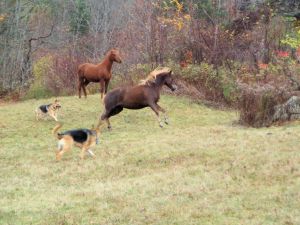
The romping is hilarious to observe, and a bit terrifying. There is always a chance of a slip or accidental connection of hoof to dog. Yet, as with much of the fun in life, the best play has a touch of danger.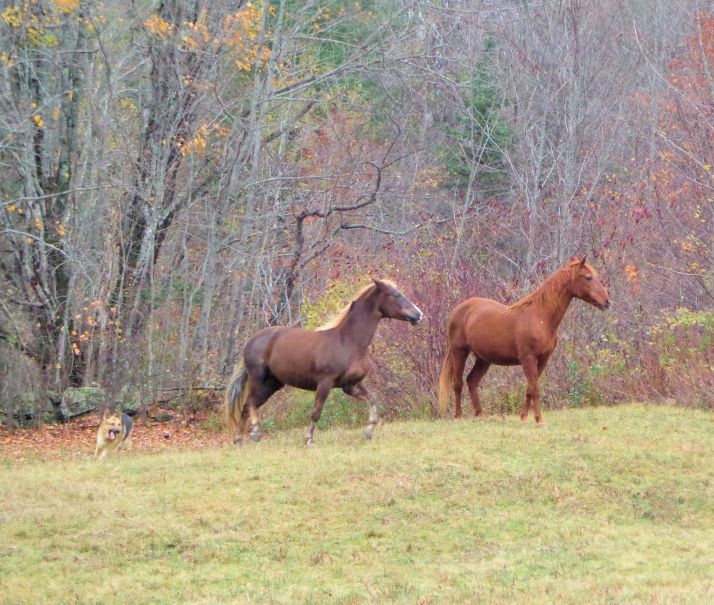
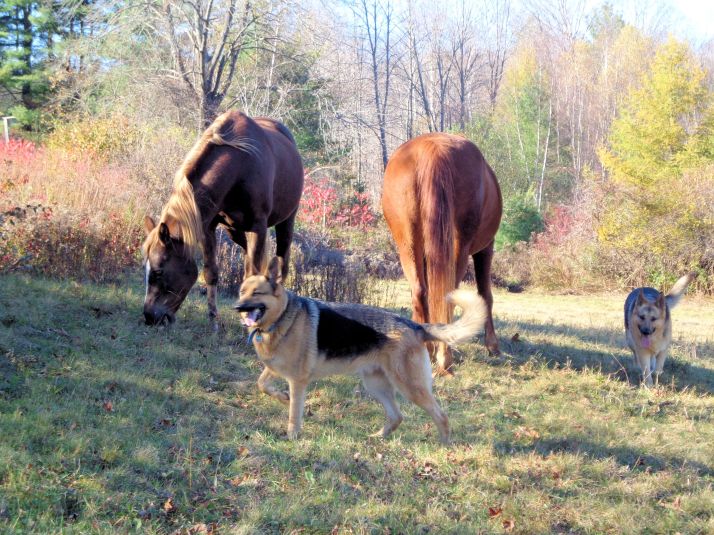
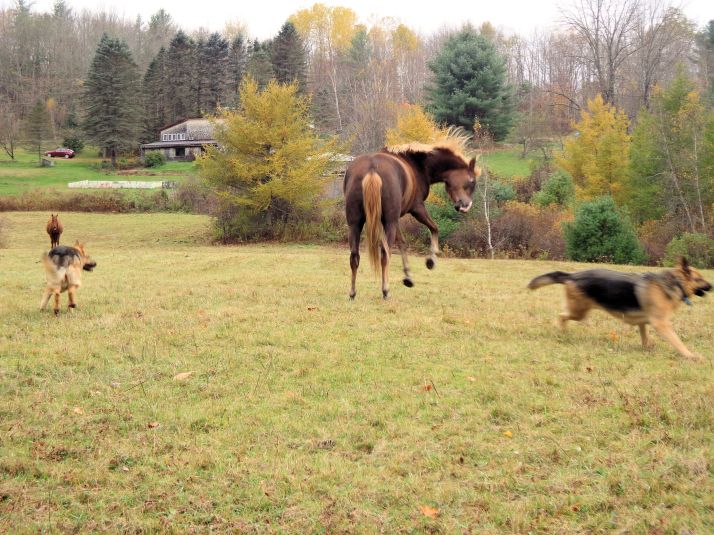
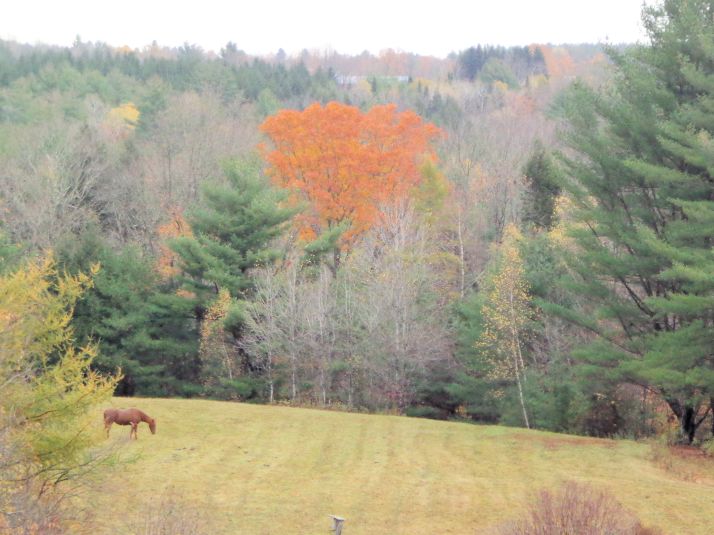
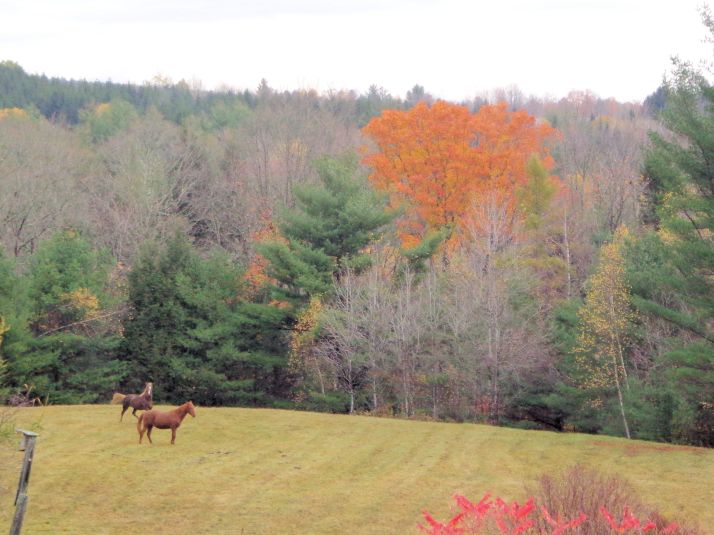
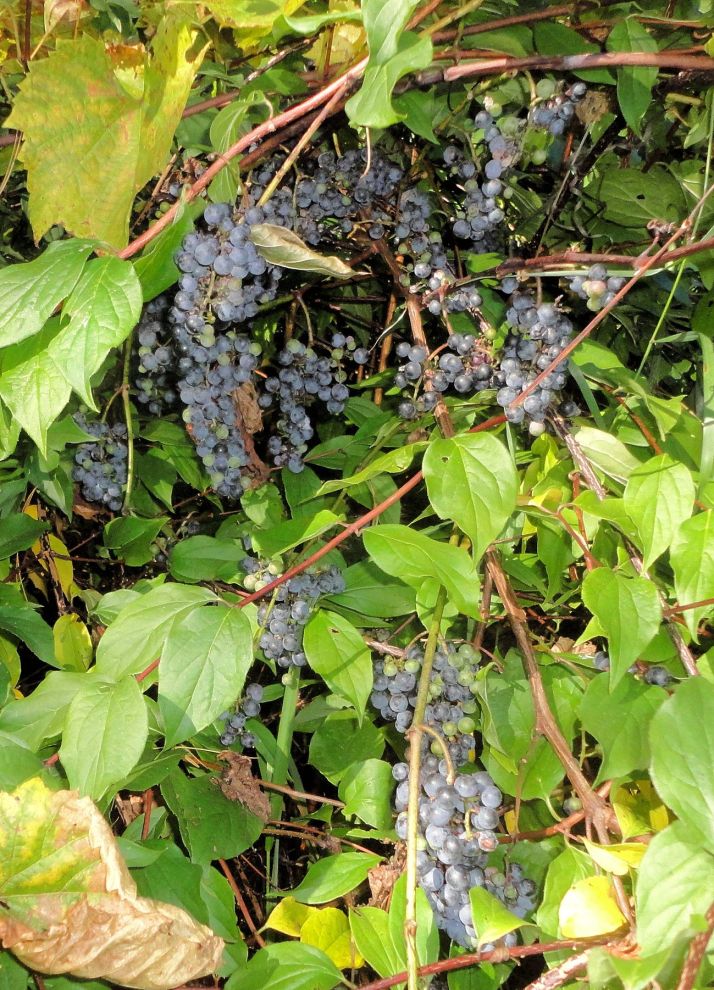
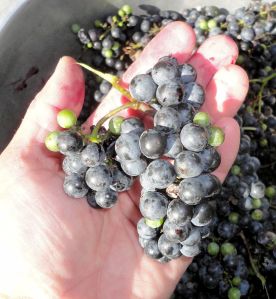
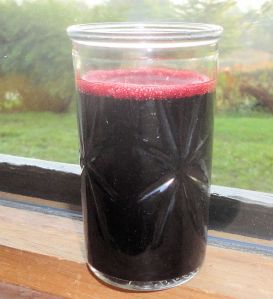
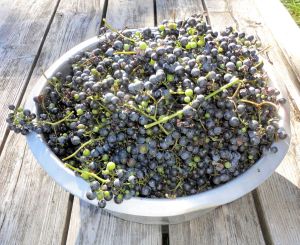
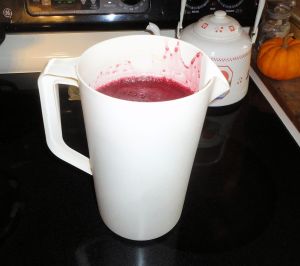
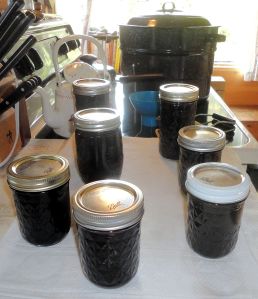
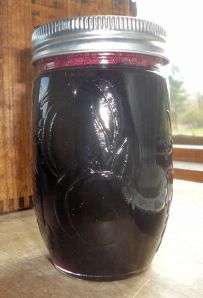
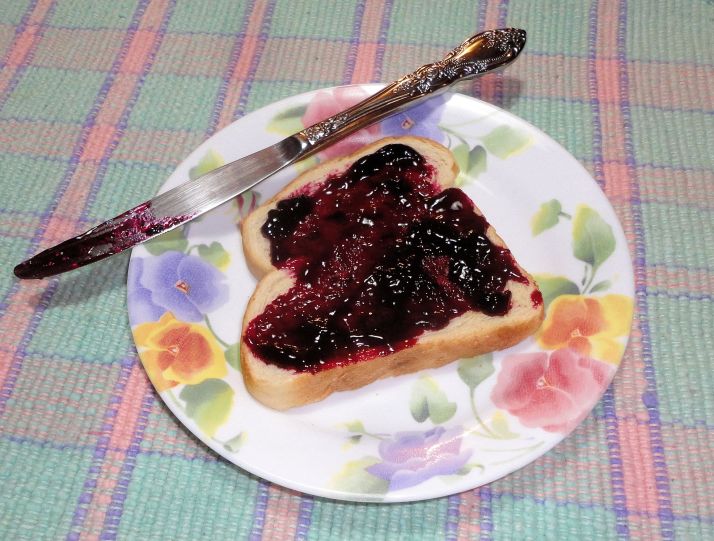
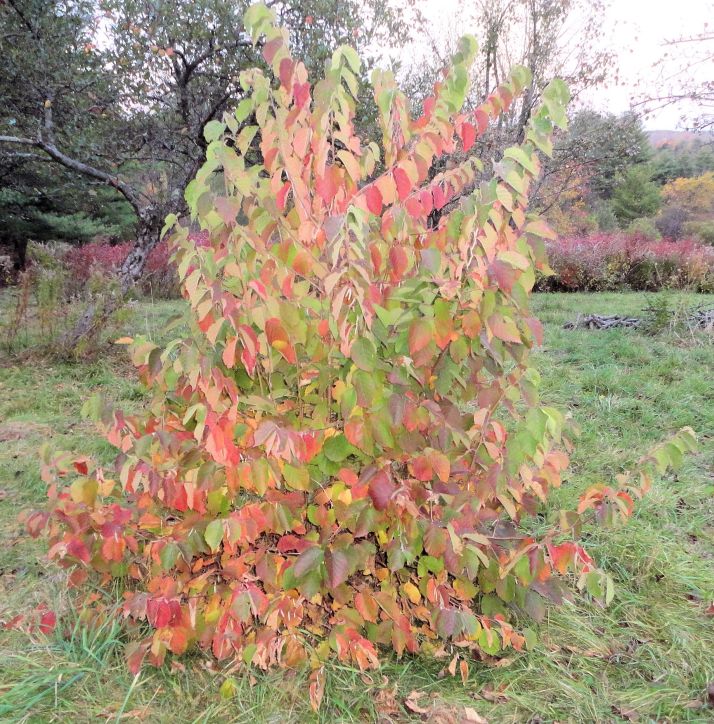
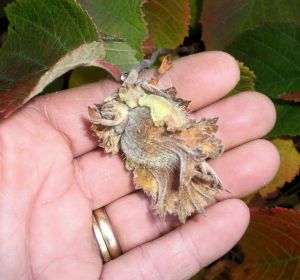
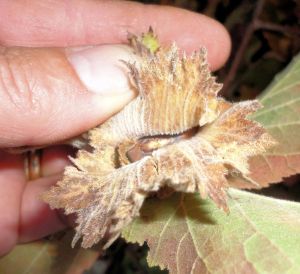
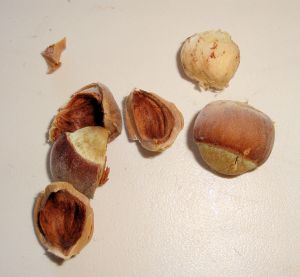
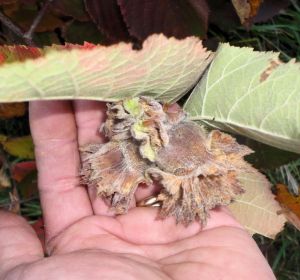
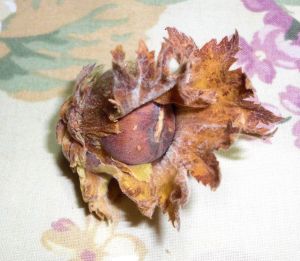
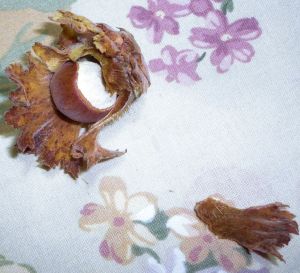
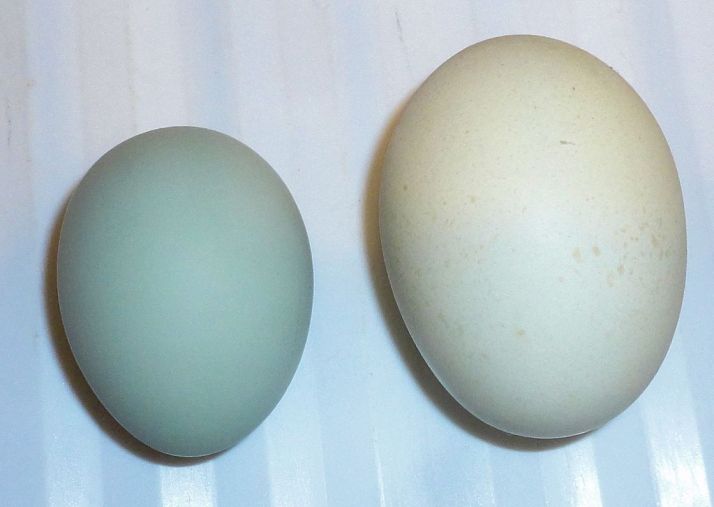
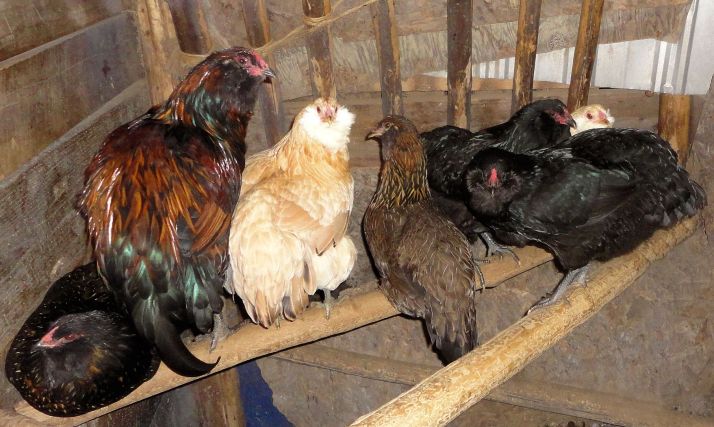
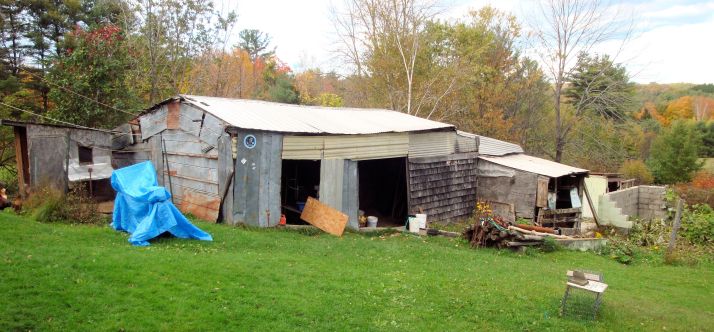
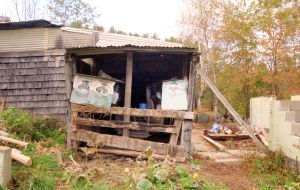
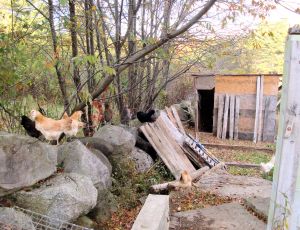
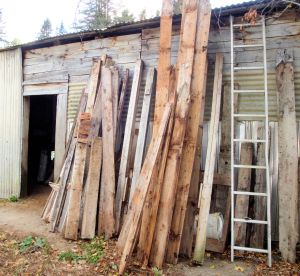
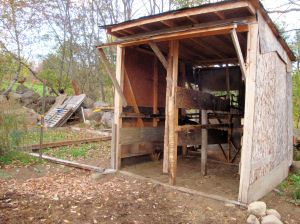
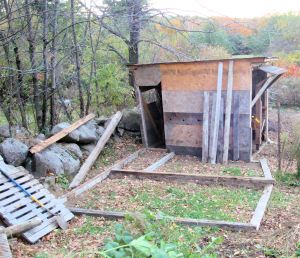
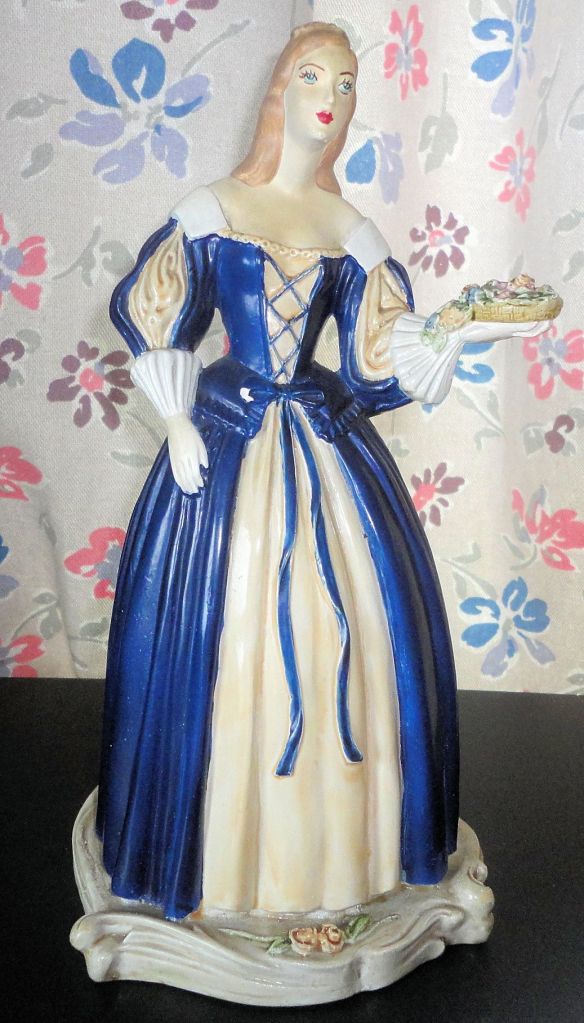
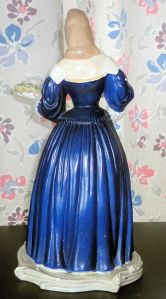
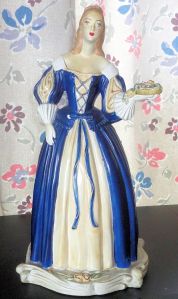
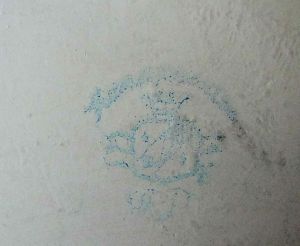
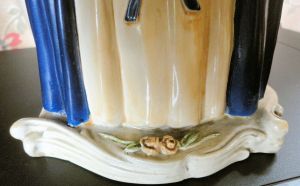
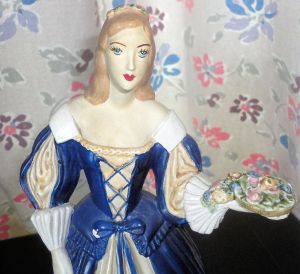
You must be logged in to post a comment.